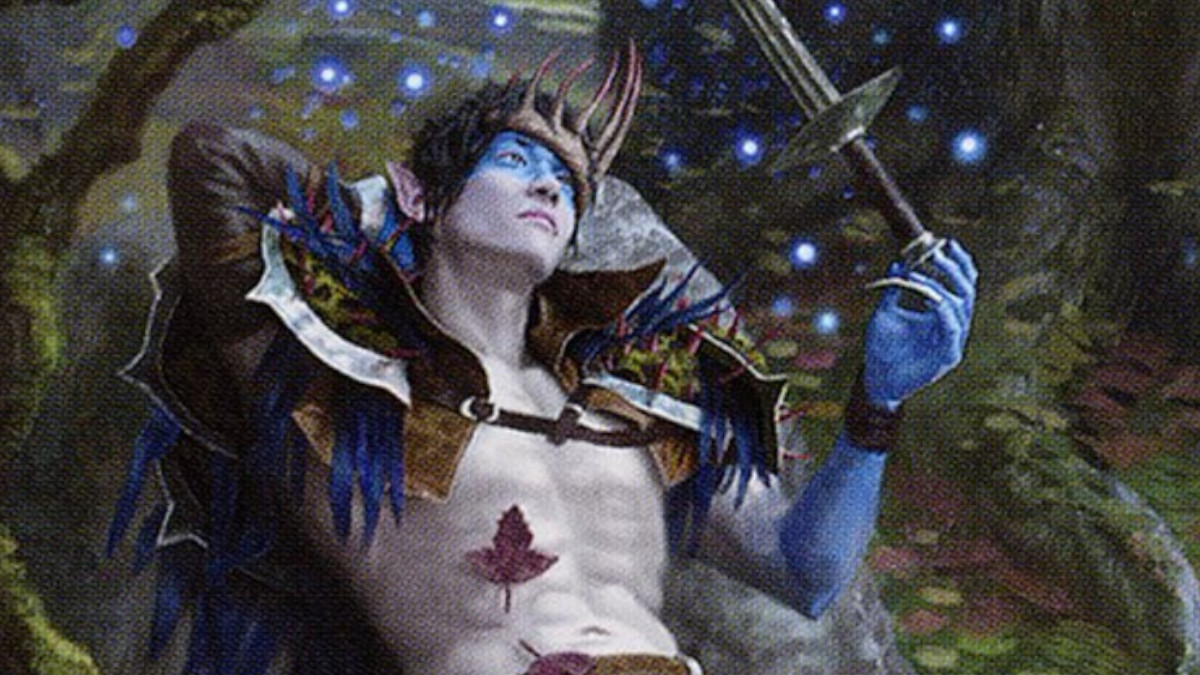A booster of Magic: The Gathering can come filled with cards that are more likely to help your opponent than the person casting them. It also features many cards that would prove so much more powerful than what their designers had intended that they had to be banned from most formats.
This is a list of cards so ridiculously powerful that they completely dominated the game for a while — until they got banished into the shadow realm.
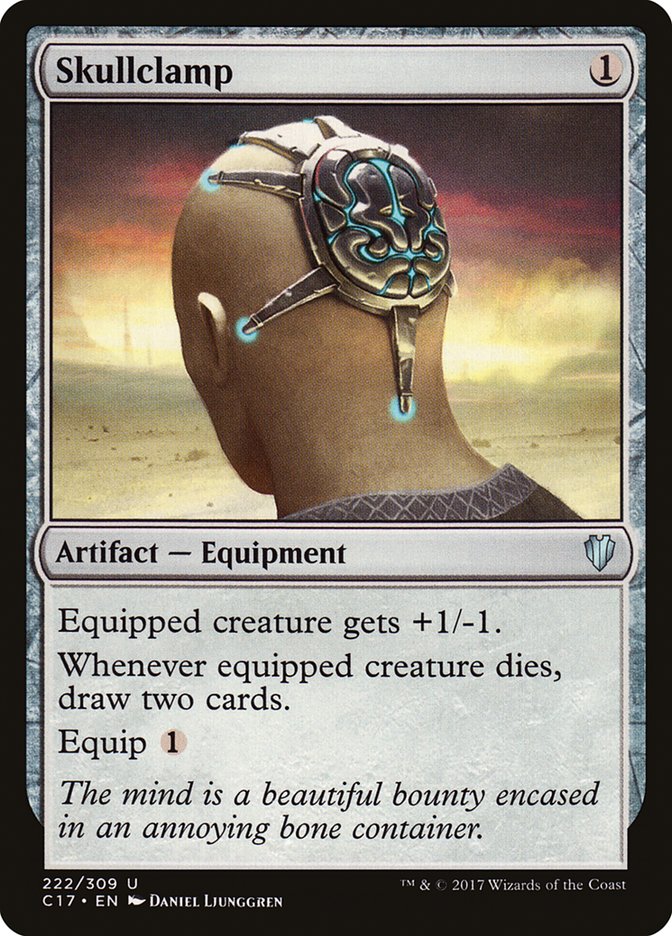
Skullclamp
Equipment cards are meant to grant strength, defense, or extra abilities to the equipped creature — or so you’d think. The most powerful use of equipment in the history of the game is one that requires you to sacrifice your own creatures to draw more cards. Skullclamp’s negative toughness modifier will kill any creature that has one toughness and will immediately grant its user two cards.
Skullclamp was an incredibly broken card, ironically much more powerful than it would be if it were to grant +1/+1 to your creatures. It started showing up in way too many decks because, as an artifact, it didn’t require any specific type of mana to be playable. Skullclamp more than earned its ban in the Modern and Legacy formats.
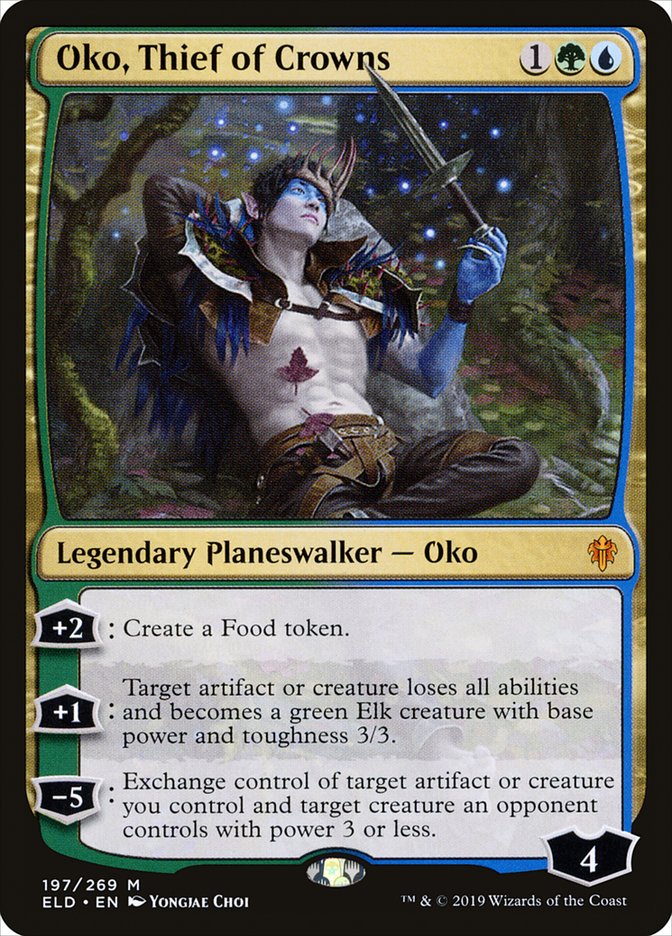
Oko, Thief of Crowns
Planeswalker cards are meant to be incredibly strong, but there’s incredibly strong, and then there’s Oko strong. Though he lacks an obvious game-ender ability that would out him as an amazing card, he does have one. But first, let’s look at all the other elements that make him excellent. He costs three mana and starts with four loyalty points, which is a rather low cost for a pretty high count in loyalty.
Oko is also very useful as he can create food tokens while gaining two more loyalty points and can swap control of creatures between its owner and the opponent. Still, Oko’s game-breaking ability is the one that turns any creature into an ability-less 3/3 Elk creature. That seems like something you can use to buff your 1/1 creatures into becoming stronger Elks, but it’s even better at severely debuffing the opponent’s best creatures.
Best of all, that extremely useful ability doesn’t cost him loyalty points, but instead, it nets Oko one more point. Oko naturally became one of the most dominating cards in the history of the game, and had to be banned everywhere outside of Commander and Vintage.
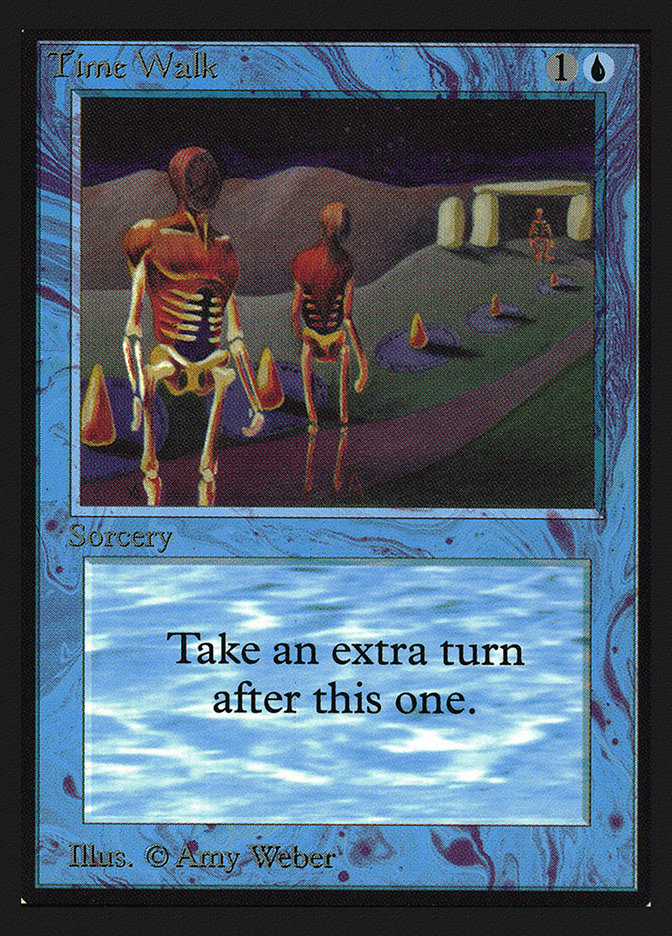
Time Walk
This sorcery is part of the famed “Power 9”, MTG cards so ridiculously powerful that you could argue they were made at a time when Wizards of the Coast couldn’t be bothered with balancing stuff at all. Spoilers: a bunch of them will show up on this list.
Time Walk is as simple as it gets: you play it, then you get a whole extra turn as soon as this one is over, with no drawbacks. It would’ve been an incredibly overpowered spell even if it didn’t just cost two measly mana.
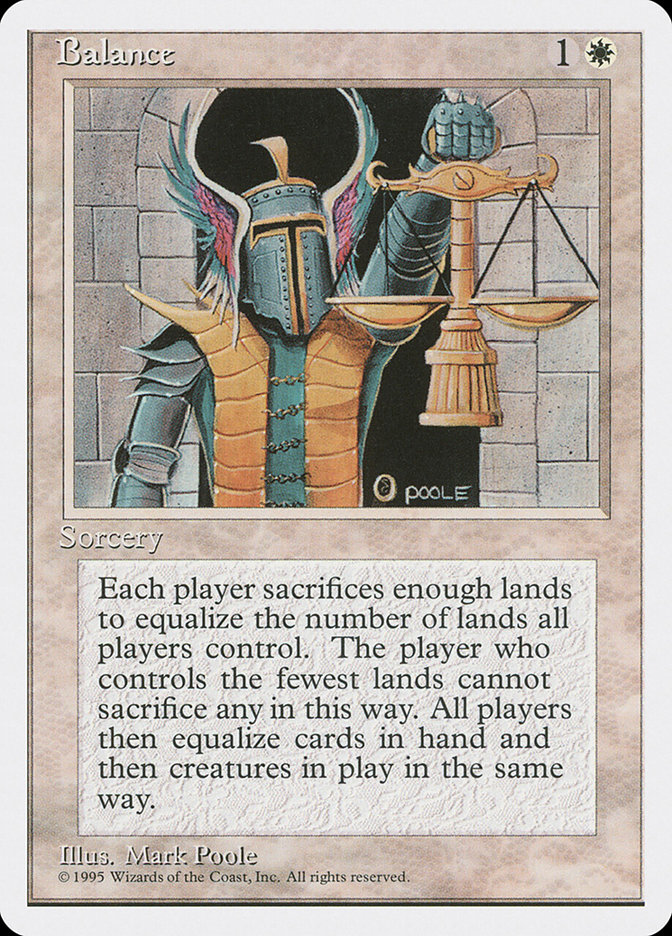
Balance
Plot twist: the one card named Balance is actually anything but fair and balanced.
Despite its claims to even out the game, Balance allowed for the sneaky player who kept it in its hand to dictate the pace of the game. If you had Balance in your hand, you could play slowly, wait for the player to get greedy and put all their might in play, then destroy everything he had.
Even worse, Balance is extremely low cost, meaning that you don’t even need to keep a lot of mana in check so that you can use it. If anything, Balance taught us that there’s no such thing as neutrality when it comes to war — then it got banned everywhere outside of Vintage, where it’s just restricted.
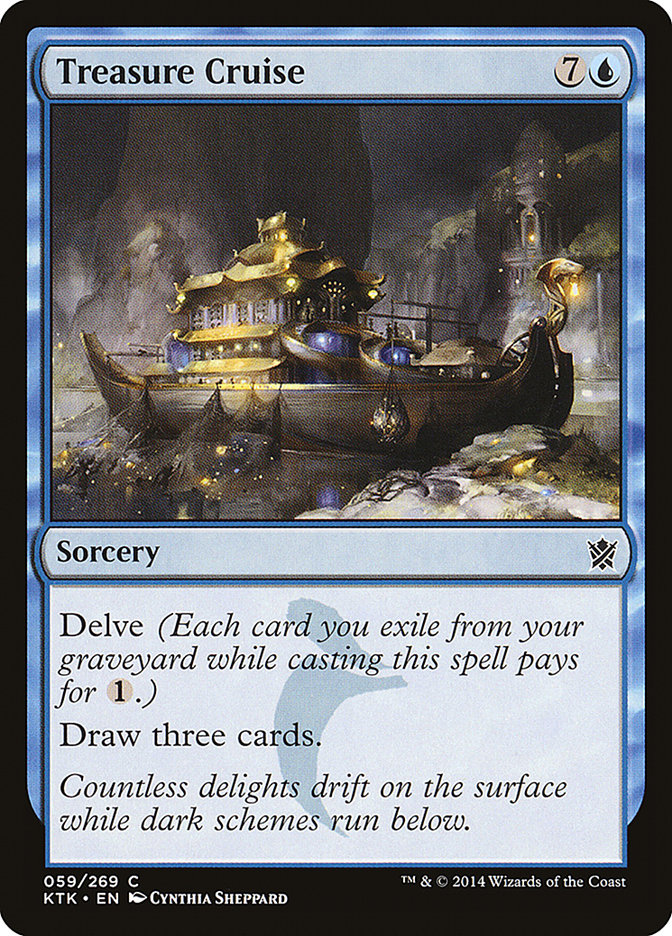
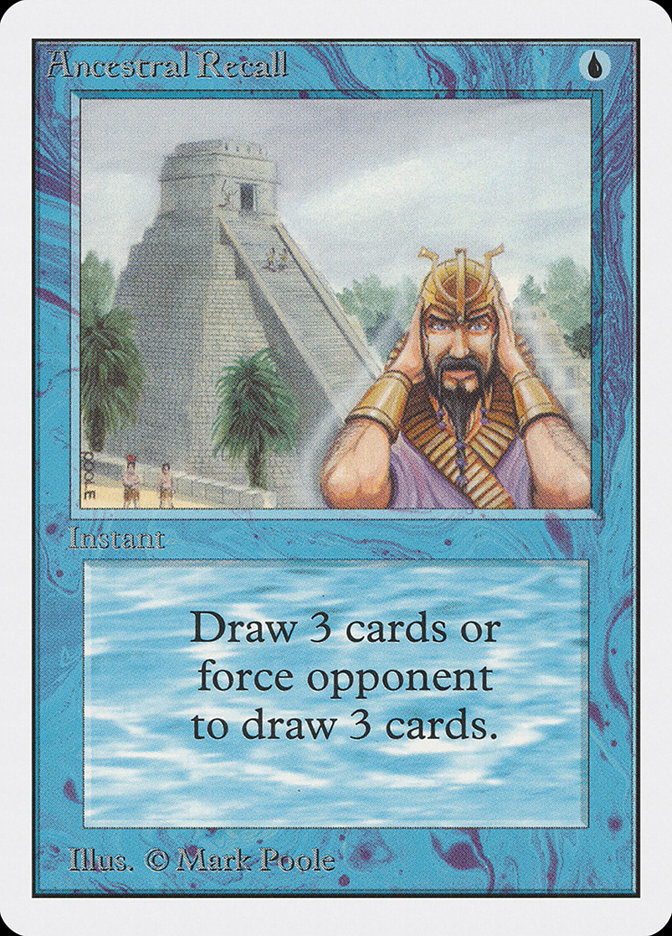
Ancestral Recall/ Treasure Cruise
Buying cards is one of the best things both out and inside the game of MTG. There are many overpowered cards when it comes to getting players to draw cards, but nothing comes close to Ancestral Recall. This member of the “Power 9” is an instant that, for just one blue mana, allows you to pick a player to draw three cards.
When Wizards later tried to come up with a successor to Ancestral Recall, they came up with Treasure Cruise. To help you realize how powerful Ancestral Recall really was, Treasure Cruise asks that you pay eight mana — unless you can exile seven cards from your graveyard, in which case it will cost the same as Ancestral Recall. Unsurprisingly, Treasure Cruise ended up banned in all but the Vintage format, where it’s restricted. The apple doesn’t fall far from the tree.
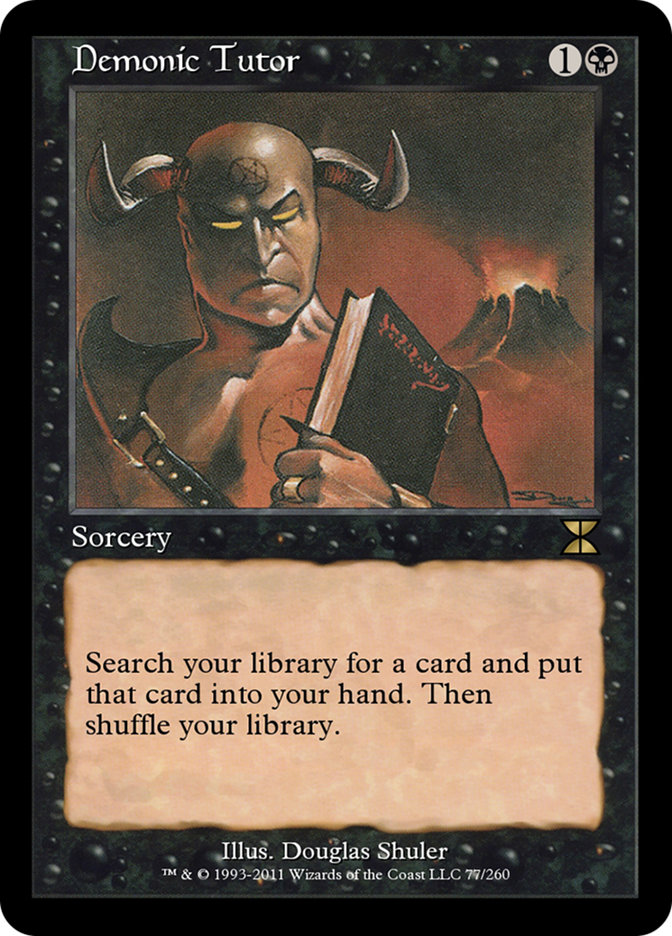
Demonic Tutor
Cards that allow you to draw cards are some of the most powerful cards in the game because they speed up your game while raising the odds that you’ll get what you need to finish off your opponent. Demonic Tutor takes it a step further by allowing you to search for exactly the card that you want, then putting it in your hand. It’s like unlocking teleport in a marathon.
Demonic Tutor ended up banned, and MTG later released a similar card, Vampiric Tutor, which requires players to pay two life and only put the card in question on top of the library, but it only cost one mana and was an Instant. All in all, Vampiric Tutor ended up nearly as overpowered as its originator and also ended up banned outside of Vintage, where it is restricted.
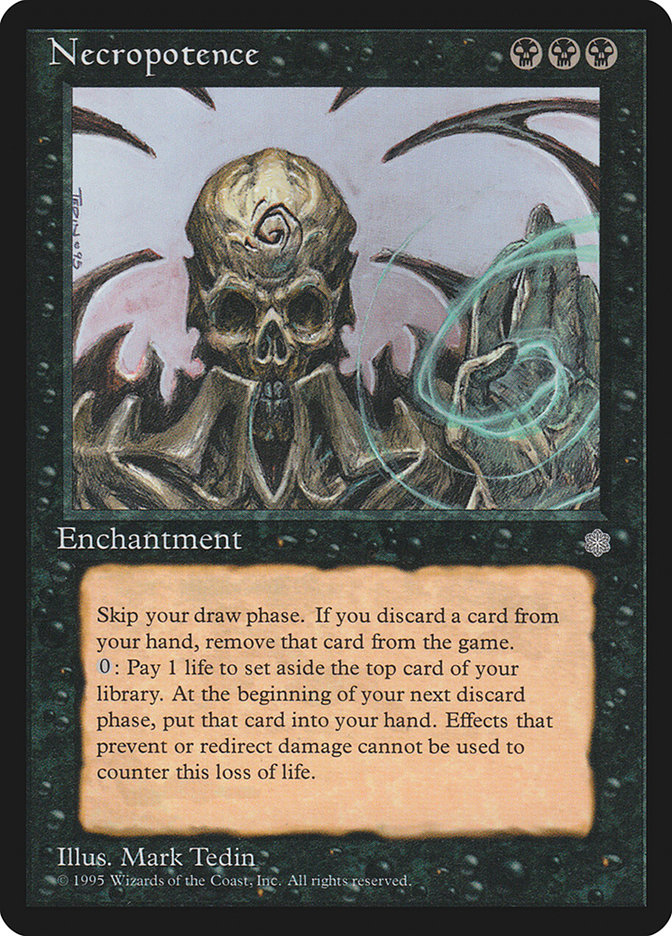
Necropotence
At first, many looked at the downsides of skipping one’s draw phase and having to pay one life for every card they wanted to buy as absolute deal breakers. Then, players began to realize that, when paired with sorceries that would drain life from the enemy, getting cards mostly just at the cost of your opponent’s expense was a great deal.
If Necropotence was great by itself, it became a godlike enchantment in many combos that completely dominated the game for a short while. After its early ’00s reign, it inevitably got banned everywhere outside of Commander and Vintage, where its usage is restricted.
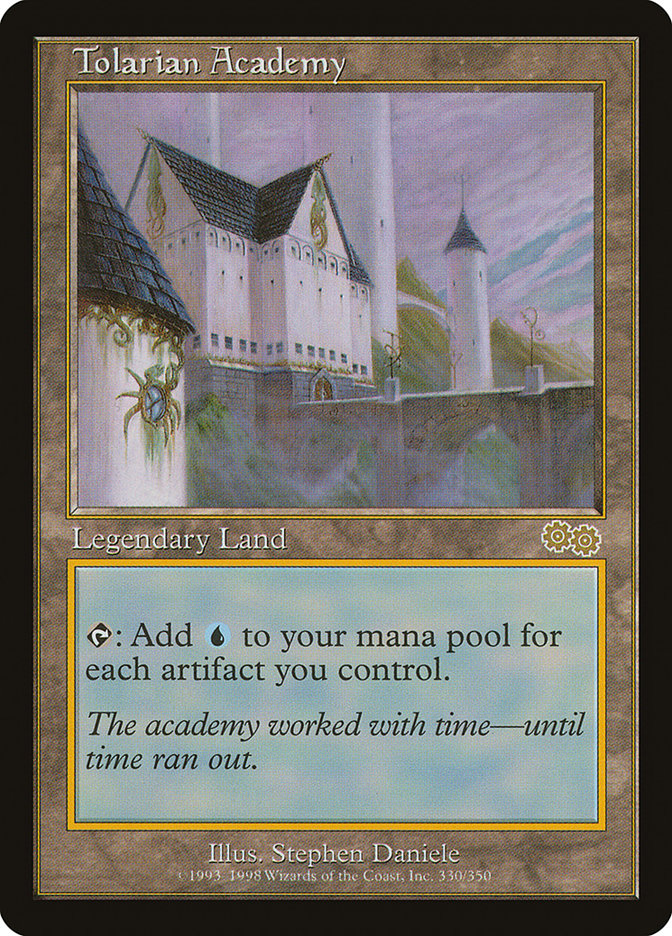
Tolarian Academy
Unlike Ice Age, the set that contains the amazing Necropotence and little else, Urza’s Saga is one of the best sets in the history of the game. Outside of the sets containing the “Power 9”, it’s hard to beat Urza’s Saga, as it features top-tier cards for pretty much all colors in the game.
Urza’s Saga is known for land cards such as Gaea’s Cradle, which you can turn to give you one green mana for each creature you have in play. That’s neat, but instead of synching up with creatures, Tolarian Acadamy synchs with artifacts, and there are a bunch of useful artifacts in the game that cost as little as 0 mana to enter the game.
It’s not entirely outside of the realm of possibility that Tolarian Academy will grant you four blue manas in your very first turn, which makes it the most busted land in the history of the game. Tolarian Academy is so busted that it’s banned everywhere outside of Vintage, where it’s restricted.
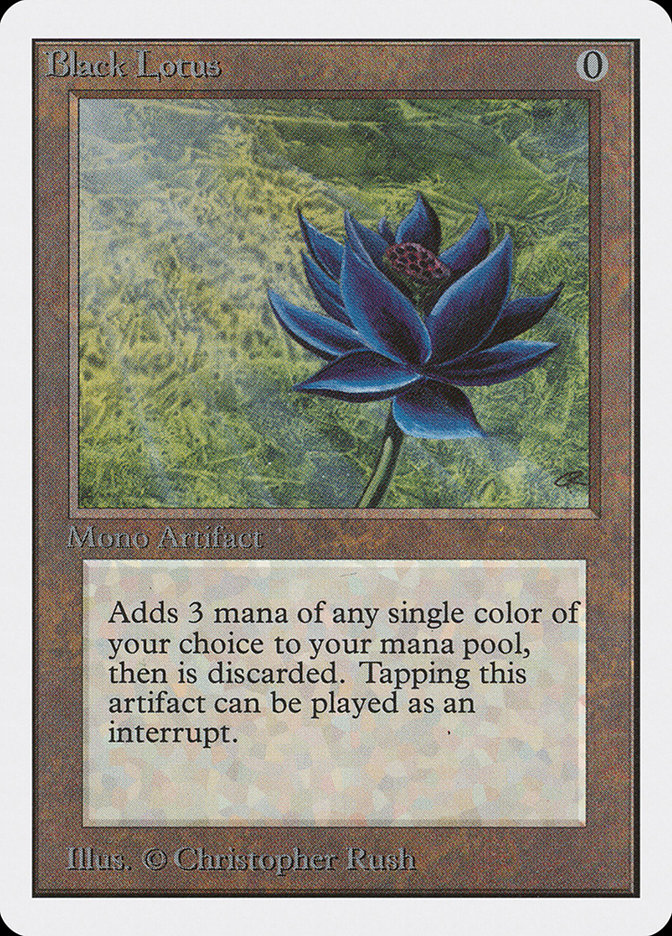
Black Lotus
This is the most famous and most expensive card in the history of the game. Even if a lot of that value might perhaps come from shady tricks to get it priced higher, there’s no denying that this is the best card in the history of MTG.
Think about it. A card that, for the price of nothing, will grant you with three mana that you can use on anything. With one black lotus, you get to cast Necropotence on your first turn, or Ancestral Recall plus Time Walk. How crazy is that? Well, it’s crazy enough to only be banned everywhere outside of Vintage, where it’s restricted.
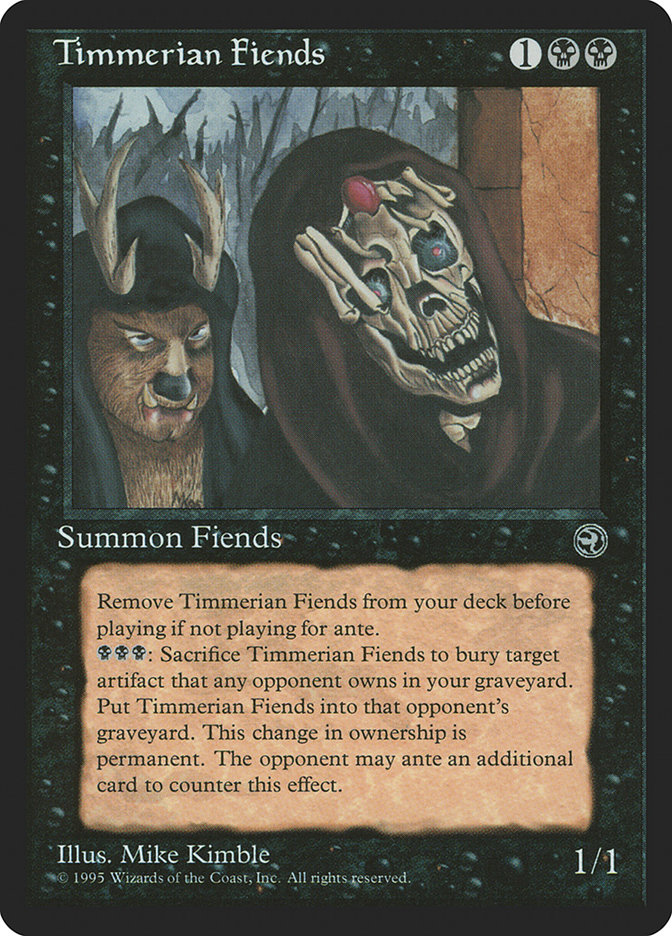
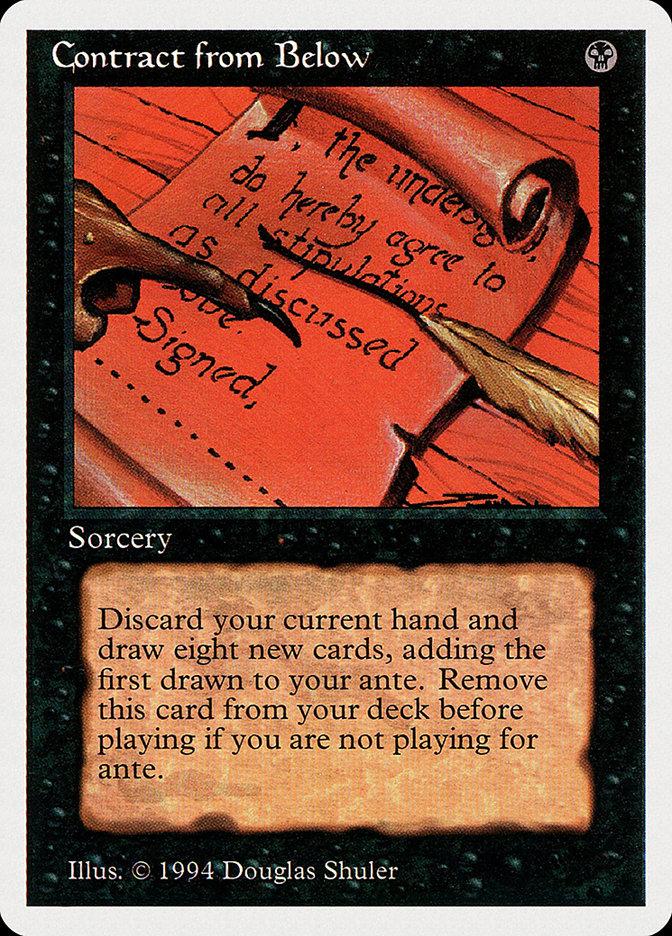
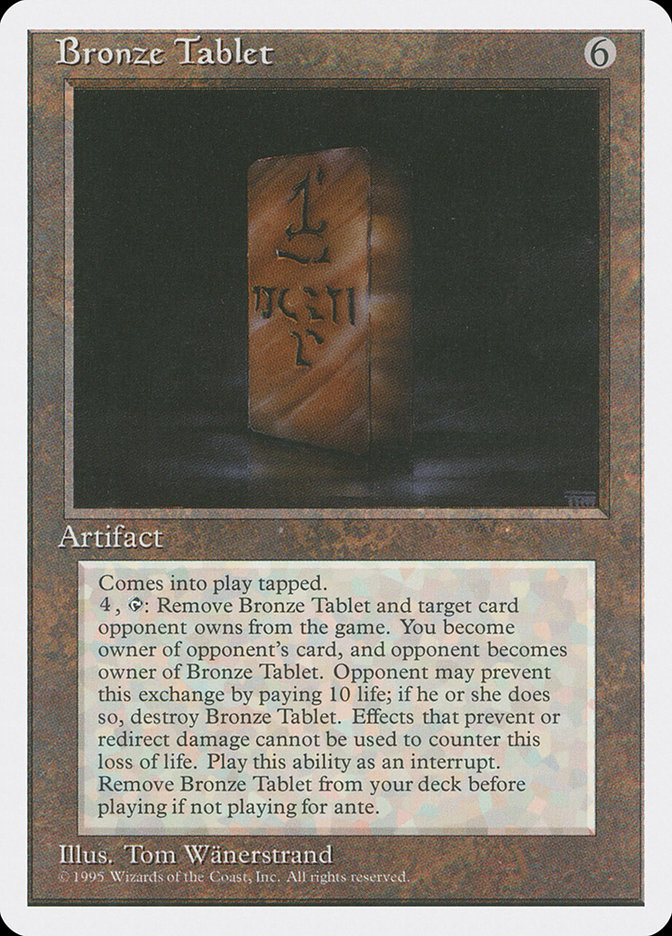
Cards that play for ante
And what could be even worse than a Black Lotus? Well, back in the old days, MTG featured a bonkers mechanic called Ante. This mechanic didn’t really give players an advantage but rather upped the stakes of the game to insurmountable levels. Ante cards made it so that the result of the game would cause the losing player to pass IRL ownership of a card to their opponent.
Though it sure did up the ante of the game —Final Fantasy VIII’s Triple Triad style — this mechanic made MTG go from a trading card game to a gambling card game, so these cards all just had to go in all formats.
If all ante cards seem to have somewhat of a cursed aura to them, that’s likely because they might very well be.
